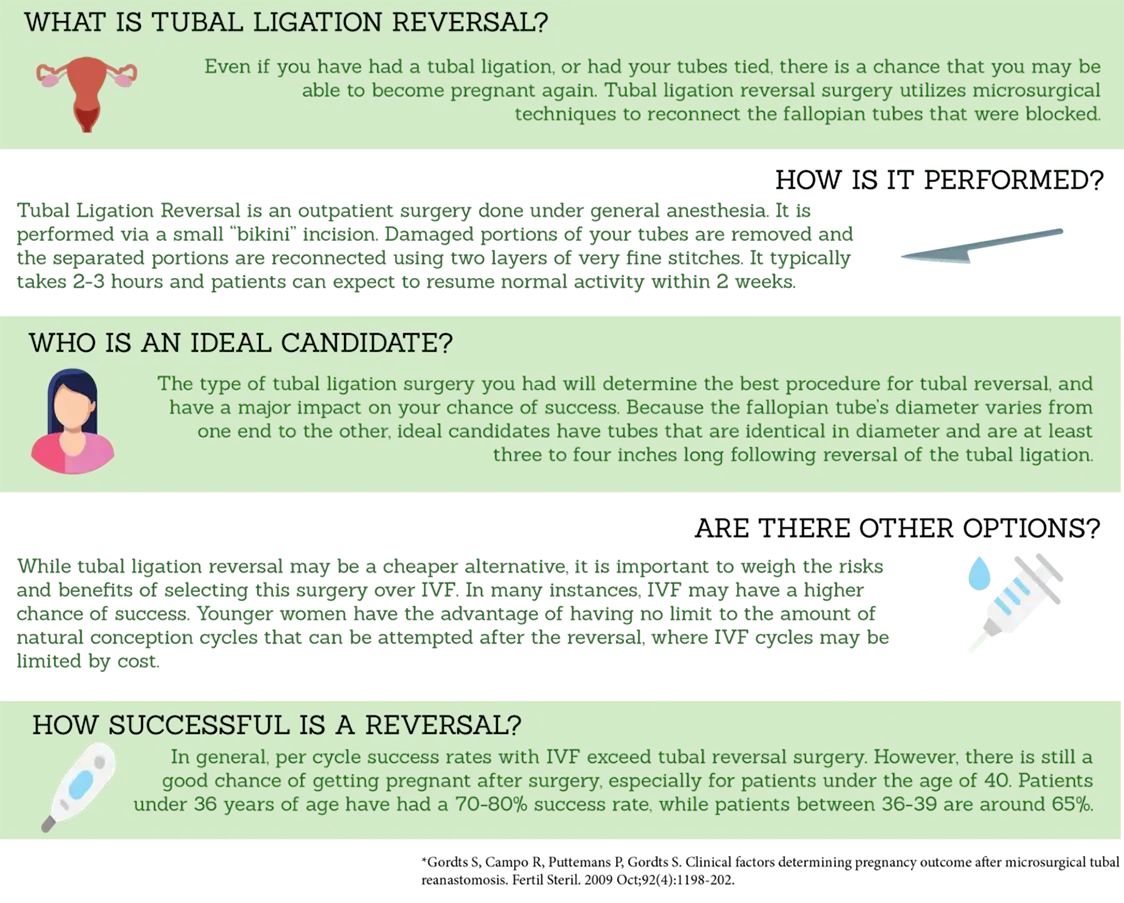Tubal Reversal Surgery
Tubal Reversal Surgery
Tubal reversal surgery is an operation that affords a woman who has had a tubal ligation (tubal sterilization) a chance at pregnancy again. Tubal reversal surgery utilizes microsurgical techniques to open and reconnect the portions of the fallopian tubes that were blocked. This is an alternative to in vitro fertilization for some women. Tubal Reversal is an outpatient surgery performed under general anesthesia through a small “bikini” incision. The risks associated with the tubal reversal procedure are minimal and most patients can return to work one to two weeks following surgery.
We will need to obtain your Operative Report from your tubal ligation (sterilization operation) surgery. A copy of your Operative Report can be obtained from your doctor or from the hospital where your tubal ligation was performed. If a portion of the tube is surgically removed, information regarding the length of tube removed is helpful when counseling patients on the anticipated outcome if tubal reversal surgery is performed. You will need to complete a medical records release form and fax it to the either the physician’s office who performed the surgery and/or the medical records department of the hospital where your tubal ligation was done.
Certain factors have a direct effect on the potential for a successful tubal reversal procedure. The type of tubal ligation surgery you had will determine the best procedure for tubal reversal, and have a major impact on your chance of success.
Because the fallopian tube’s diameter varies from one end to the other, the best chance for success occurs when the diameters of the two remaining sections of fallopian tube are almost identical. The ideal candidate for tubal reanastamosis is a women whose tubes are at least three to four inches long following reversal of the tubal ligation.
The decision to undergo tubal ligation reversal surgery should be carefully weighed against the potential for successful in vitro fertilization. Women who have little chance of successful tubal reversal should be advised to consider in vitro fertilization at our Dallas Texas IVF Clinic.
In general, per cycle success rates with IVF exceed tubal reversal surgery. The advantage of reanastamosis in younger women is that there is no limit (until loss of ovarian function) to the number of natural conception cycles that can be attempted. Whereas, the number of IVF cycles is sometimes limited by cost.
As women age, their fertility naturally declines, sometimes precipitously, and is signaled by an elevated FSH level. These women may not have time to attempt multiple natural cycles and are better served with IVF.
